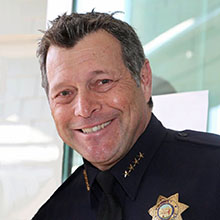
Use of Force at EPD
As part of our policy to control the use of force, EPD performs an inspection that collects the data surrounding the circumstances, types and levels of force used by its officers. Captain Stephens read every report where force was used and watch the BWC video if clarification was needed. Presented here are the data collected from EPD’s use of force in 2016.
The data from Captain Stephen’s review shows:
Analyses EPD used some level of force in ½ half of 1% of all documented police contacts and in 6% of arrests. Of all the uses of force, two people received injuries reportable to the department of justice. EPD is faced with an enormous population of mentally ill and/or people in a state of drug induced psychosis, who behave violently. When the errant conduct goes beyond the capability of family, friends and bystanders, the police are tasked with bringing control to an often chaotic situation. EPD has been skillful in using a low level of force. As a result, only two people received significant injury. The reason may be that EPD has restricted its policy for the use of force beyond what is typical. Policy does matter. We believe this helps establish a standard for the frequency, type and level of force used. To expand our efforts to reduce the use of force, EPD does the following:
The use of force is ugly to see and worse to be part of. Suspects get hurt, good cops suffer career ending injuries and undergo a life time of pain. There are no simple and clean ways to take a person into custody who chooses not to comply. Some of our officers are 6’4″ and 300 pounds of muscle, and others are 5’2″ 110 pounds. Some are Brazilian Jujitsu masters, and others have little experience fighting. None are Chuck Norris, karate-ninja icons as seen in the movies. Regardless of our level of experience, each of us will be confronted with a violent person. The type and level of force used will depend on our knowledge, skills, and physical capabilities. More importantly not having to use force will depend on our ability to communicate effectively. Each EPD officer would much rather talk people into handcuffs, than fight with them. Fighting and getting injured gets old…really fast.
This post was originally published on April 11, 2017 on Eureka Police Department’s blog.